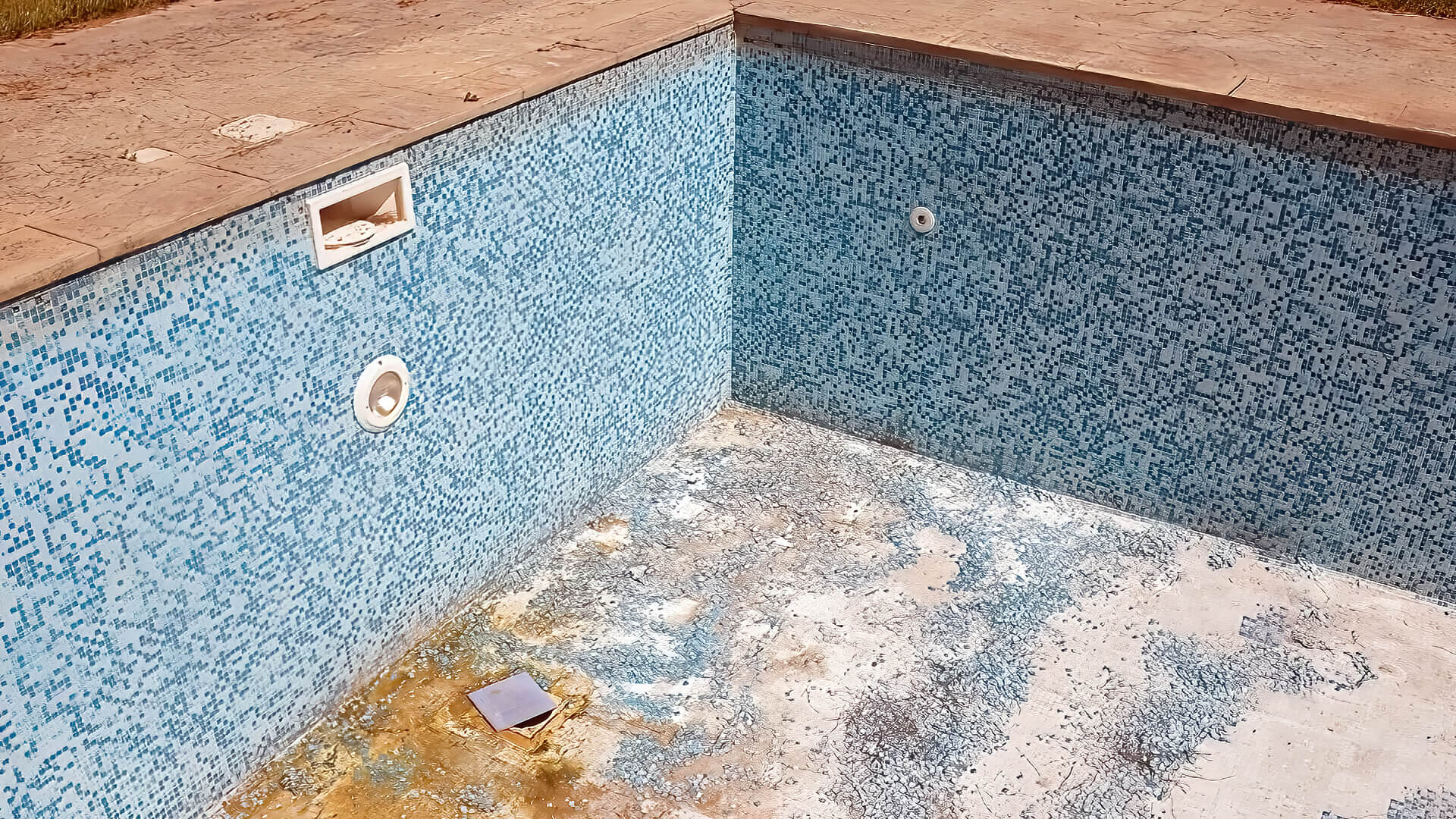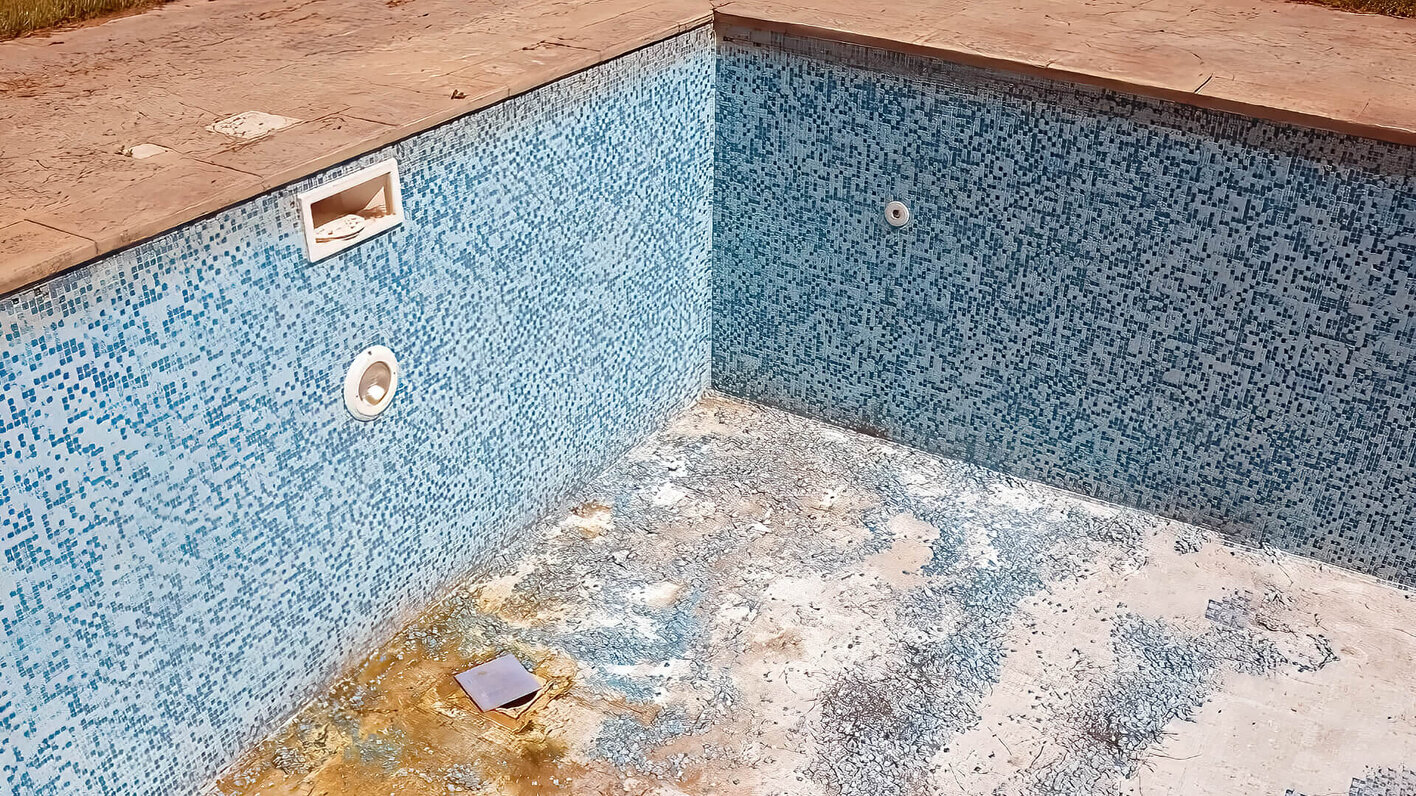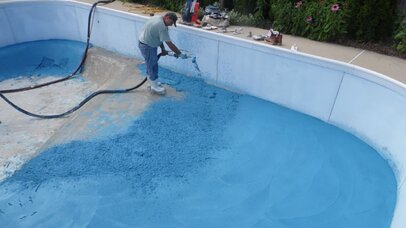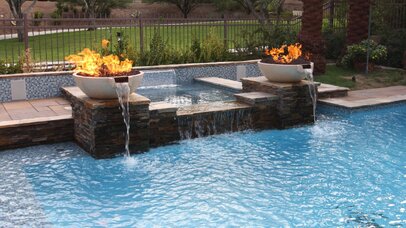Is your old pool sitting unused for a while? Now might be a good time for a thorough maintenance check to see if it requires remodelling.
Home swimming pools usually have varying lifespans depending on the materials used. Most experts suggest a concrete in-ground pool’s lifespan is around 20 to 30 years.

You may need to do a pool resurfacing or replace vinyl liners every 10 to 12 years. Some people even prefer regularly upgrading their pools to enjoy new features. Whatever your reason for seeking renovation, as a homeowner, you should know about the steps involved in making the changes.
That’s why we’ve created this brief guide about pool renovation. The points will be useful when discussing your pool remodelling ideas with a contractor.
So, let’s begin!
Steps Of The Pool Renovation Process

1. The Beginning
Before the pool contractors can start the remodelling process, they will need to inspect your pool thoroughly. This includes checking the health of the tiles, the pool liners, and the drainage system, among other things. They will also consult you about the project’s design or improvement expectations.
After running the tests and chalking out some calculations, the contractors will provide you with the time required and the estimated cost. Note that the initial estimates may change on factors like delays, material charges, further inspections, and bad weather, to name a few.
2. Remodelling Process
Once the contractor has acquired your consent and decided on the procedures, they will start with the renovation work. Here are some steps of the process that you’ll come across on visiting the pool site:

Draining
The first task of the workers is to set up a submersible pump at the bottom of your pool to take out all the water. It might take six hours to half a day to complete this task based on the size of your pool.
Chipping Out
If the renovation calls for upgrading your pool tiles, the next step would be to chip off the existing pool tiling. Workers will finish the day’s work by cleaning off the gunite shell and priming for the tile application.
Tiling
Tiling is the meticulous process of laying down the tiles on the concrete surface of your pool. A good contractor will let you choose from several tile options and use an appropriate grout to provide a cohesive look. The process may take a couple of days based on the size and number of tiles.
Surface Application
In some cases, the surface of pools needs to be fixed. For this process, contractors usually hire mixing trucks to mix the pebble and plaster. Once mixed, the mixture is pumped into the swimming pool using large hoses and hand trowelled to form an even and smooth layer which takes around four to six hours.
Pebble Application
Creating pebble pool surfaces requires a precise yet tedious process of washing away the top layer of the plaster to expose the aggregates or pebbles. The surface is typically sprayed with water, trowelled, and sponged until the desired look is achieved, along with an acid wash to remove any hazing.
Adding Water
After the surface is ready, it’s time to fill the pool. It’s recommended to fill the pool halfway up the tile line or the skimmer opening before the water flow is turned off. Depending on the size of the pool and water pressure, the filling process can take 12 to 48 hours.
Chemical Startup
The last step of pool renovation is to add chemicals to the water. This process is usually longer for pools with a plaster surface as it’s more sensitive than pebbles or tiles. So, you may need to give your pool a few days before the pH level is adjusted as desired.
What Should You Look Out For As A Homeowner?
Here are some things that you can do to ensure that your pool renovation goes as planned:
- Ensure that the water flow isn’t turned off before the pool is filled to the right level, or water lines might be left on the pool surface.
- If you have chosen to go forward with a coloured plaster surface, be present during the mixing to ensure the shade and hue before its application.
- Get routine inspections done by professional swimming pool service providers to maintain proper water chemistry, which is necessary to keep your pool healthy.
Things To Expect From A Finished Pool Renovation Process

1. Small Cracks
You may notice superficial cracks on the pool surface, typically gathered around the top steps. There’s no need to worry as they won’t affect the pool’s longevity. If there are more significant cracks, contact the swimming pool contractor as the repair is usually under warranty.
2. Pool Stains
Only after a few days of using the pool, you might be able to see some stains on the surface of the pool. These can be caused by several things, including foreign materials like dirt, leaves, and metal objects.
3. Uneven Surface
Remember that the pool’s surface is applied using a hand-trowelling process. So, it would naturally be less than using a machine to spread the plaster. Besides, it’s also normal to find dislodged pebbles in new pools. You can get help from the contractor to fix these issues if the warranty covers them.
Investing In A Pool Renovation
That’s everything we had to tell you about swimming pool renovations. Remember that the process may vary depending on your expectations and the services offered by the local pool contractor.
On that note, we would also like to say that the longevity of a pool after renovation will depend on its maintenance. So, make it a habit to check your entire pool area regularly to keep it healthy. And if there are any signs of damage, consult a professional construction team for proper help.
Another essential thing is to keep the pool as clean as possible, which minimises the development of algae or stains. You may even consult your pool contractor and install an acid feeder to maintain an optimal pH level.
If you need help with a pool renovation in Sydney or want to speak to a professional pool builder, don’t hesitate to get in touch with us anytime!
Until next time, goodbye, and take care!



